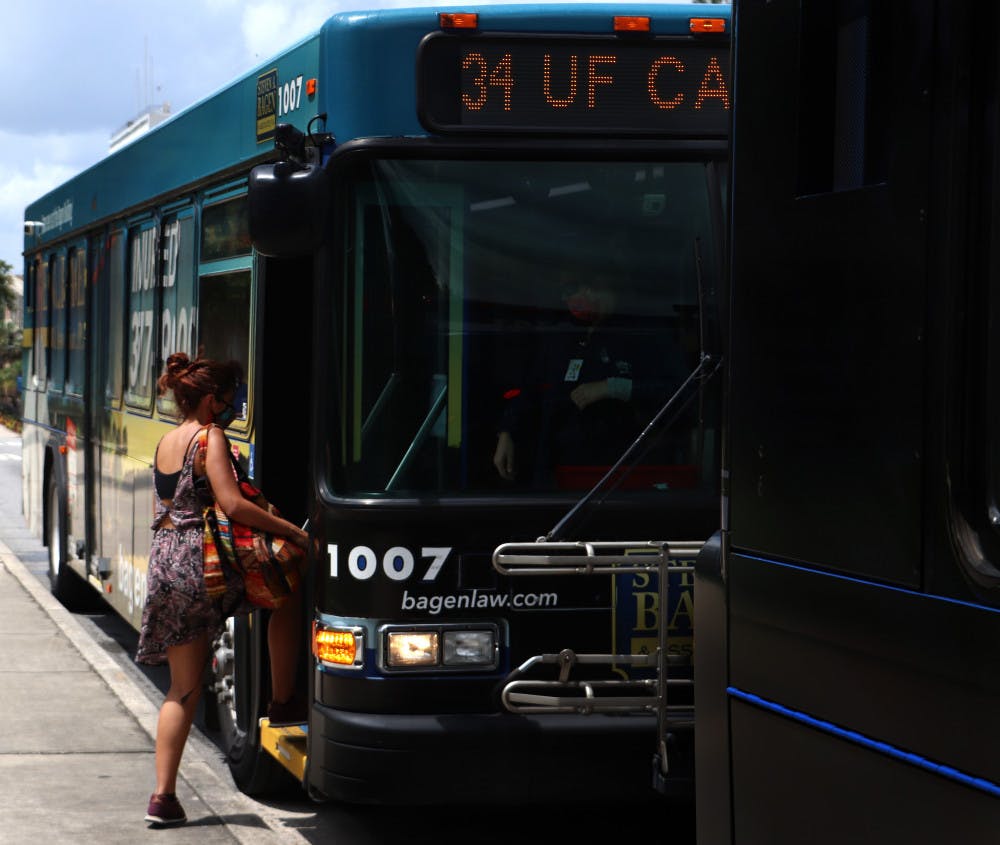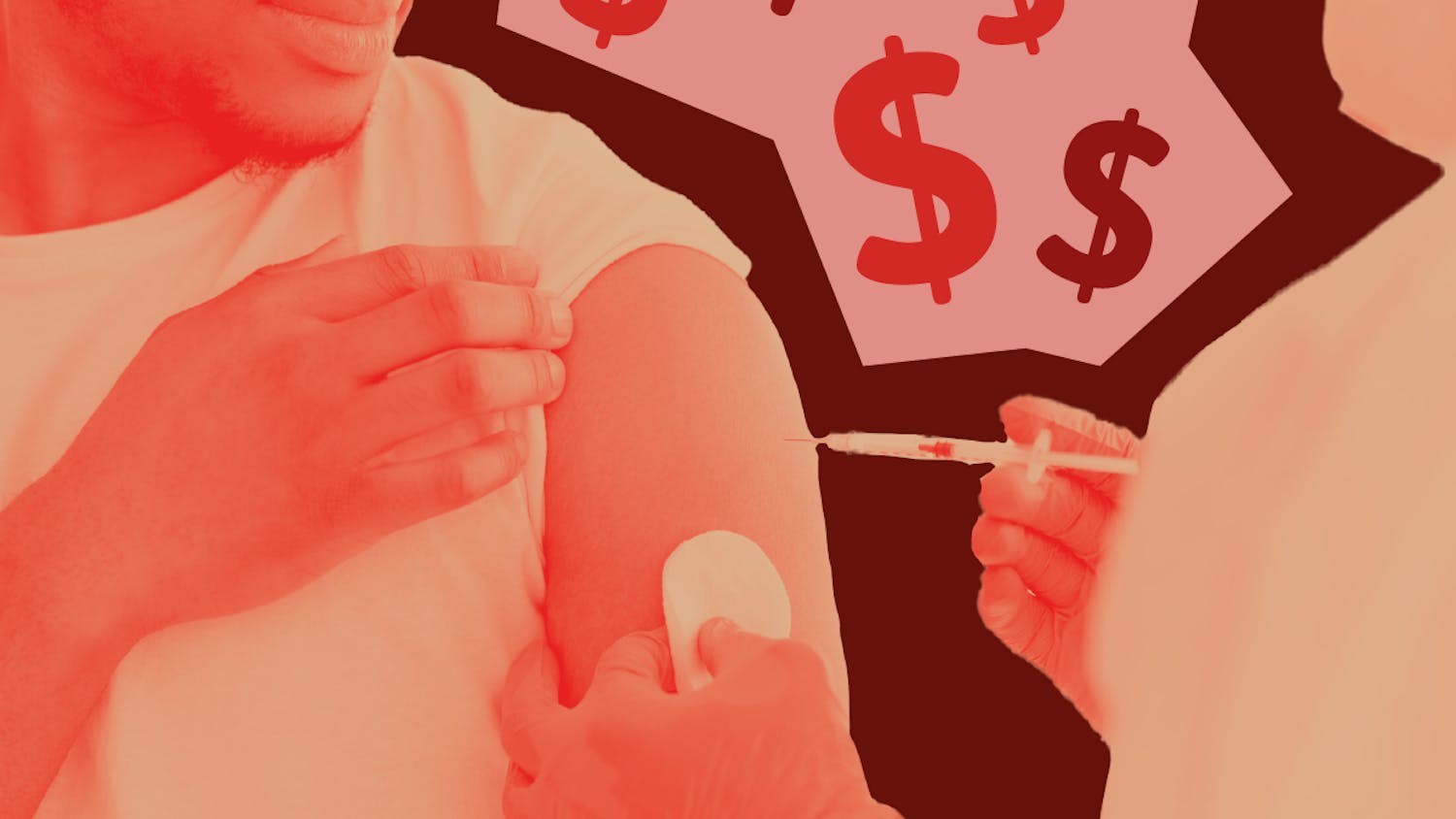Richelle Brown used to ride RTS buses five times a week. Now, she uses it twice a week and fears getting sick every time she steps on.
Brown is visually impaired and doesn’t drive, so the bus is her primary form of transportation. During the summer, she said she stopped taking the bus as often. Now, she only rides the bus to go to Walmart or her mom’s house, and she opts for an Uber to work.
“If the bus stop running, much more of the city would honestly be shut down,” she said. “So many of these people would not have a way to work.”
Like Brown, some Gainesville residents have strayed away entirely from using the buses since the pandemic hit the city in March, RTS spokesperson Thomas Idoyaga said. Most bus routes remain the same, but a few have lost or gained a bus.
Due to COVID-19 guidelines, RTS buses require passengers to wear masks and respect social distancing. The maximum capacity on the buses is currently about 20 of 60 available seats.
“Nobody wants this, but this is one of those deals where this is uncharted territory and we have to ride this one out,” Idoyaga said.

UF first-year interdisciplinary ecology PH.D. student, Natalia Uribe, 29, signals that she wants RTS bus No. 34 to make a stop on Wednesday, September 2, 2020.
RTS sent an additional bus to route 75 and route 5, Idoyaga said. Route 75, which travels from The Oaks Mall to the Butler Plaza Transfer Station, suffered delays because of the new social distancing guidelines and often reached maximum capacity quickly, Idoyaga said. Route 5, which travels from the Rosa Parks Transfer Station to the North Walmart Supercenter, also had a similar situation.
No routes have been shortened or cut, he said. The First Mile, Last Mile program, a shuttle system that transports residents in areas east of 43rd Street, is operating at a reduced capacity.
Buses are cleaned depending on their arrival to the different checkpoint locations, Idoyaga said. Route 75 is cleaned less regularly because it's a longer route that takes more than an hour to complete.
The bus drivers on routes 9, 21, 28 and 38 are transferred to cleaning crews at checkpoints including the Rosa Parks Transfer Station and Butler Plaza Transfer Station, Idoyaga said.
Route 9 travels from Reitz Union to Hunters Run, route 21, travels from the Reitz Union to Cabana Beach, route 28, travels from UF’s Hub to Butler Plaza Transfer station and route 38, travels from UF’s Hub to Gainesville Place.
The routes all travel from areas with student apartment complexes to the UF campus, Idoyoga said. RTS has noticed a decrease in the number of students traveling because only 35% of UF’s courses are in person or hybrid, a mixture of in person and online.
While RTS suffered losses because residents aren’t buying as many bus passes, information about how much revenue was lost was not available. Idoyaga also didn’t know how many students are still riding the buses.
“The issue is everyone is uncomfortable about the pandemic,” Idoyaga said. “That’s why we make sure every bus leaves in the morning with a bunch of masks.”
After Gov. Ron DeSantis announced that four UF students had tested positive for COVID-19 in March, UF’s campus closed. It was at that point Jawuane Benjamin, a 19-year-old UF biology sophomore, stopped using the buses and returned to his Tampa home.
Since coming back to Gainesville, Benjamin said he uses RTS for transportation about three times a week. Last spring, Benjamin used route 125 to travel from Lakeside to UF’s Hub for his introduction to chemistry course.
This year, he uses Route 33 to go to the Target and Publix located on 13th Street. It picks him up from near his apartment complex, Campus Circle, and drops him off near Century Tower.
Benjamin said he last rode the bus on Sept. 24 with five other students on board. He didn’t fear getting sick because the bus had a mask dispenser, and the bus-driver wore a face shield.
Micheal Hines, a 48-year-old Gainesville resident, continued using the buses three times a week despite the pandemic. Hines, who doesn’t have a car, uses the busses as his primary way to get around.
He said he pays $3 for a 24-hour bus pass whenever he boards an RTS vehicle. He isn’t concerned about contracting COVID-19 because the buses require face masks and staff members wipe down the seats.
Hines lives near Devil's Millhopper Geological State Park and usually takes route 23 to the mall, where he searches for jobs and shops, or route 43 to Santa Fe College’s bus station because it’s close to his home.
“You can only have so many certain people on the bus,” he said. “I really haven’t seen that many people on there.”
UF first-year interdisciplinary ecology PH.D. student, Natalia Uribe, 29, boards RTS bus No. 34 on Wednesday, September 2, 2020. Uribe said she thinks the buses are safe and that not many people are using them.






